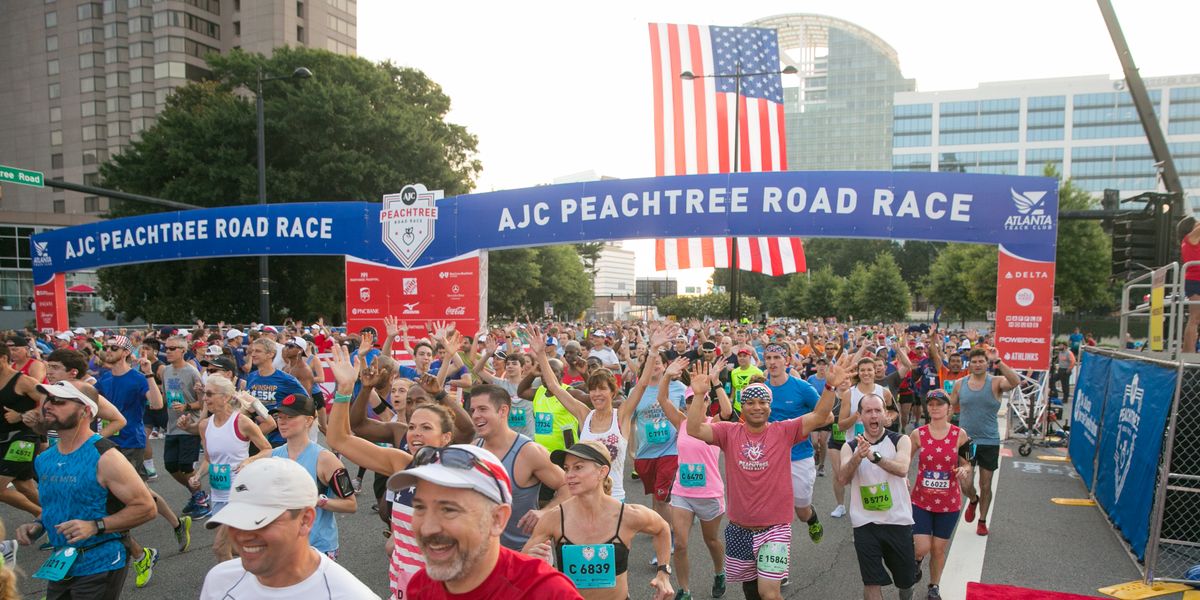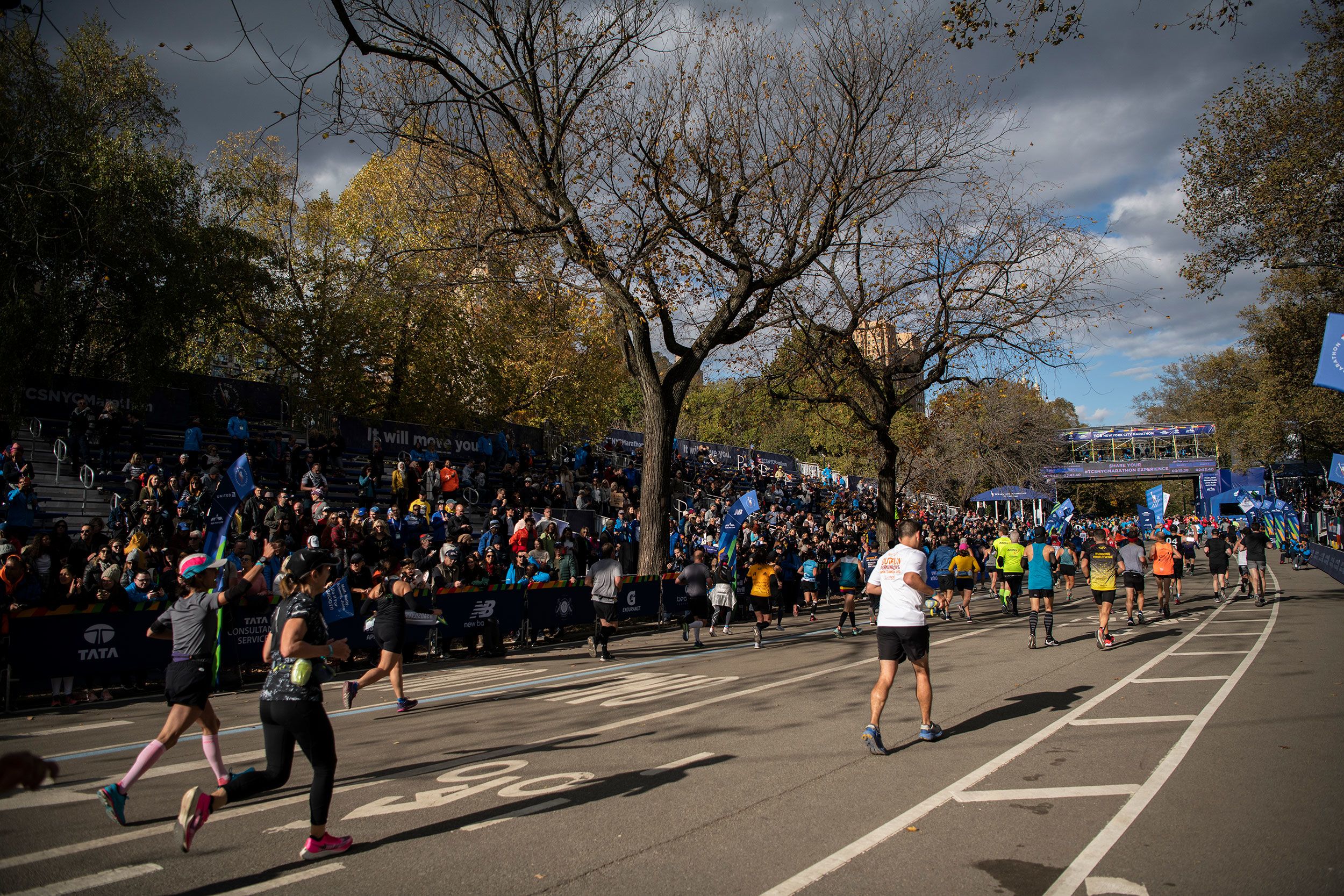Home>Misc>Featured>Which Interval Training Is Best For Seniors


Featured
Which Interval Training Is Best For Seniors
Modified: January 2, 2024
Discover the featured interval training methods that are best suited for seniors, helping them stay active, improve cardiovascular health, and maintain overall fitness.
Introduction
As we age, maintaining good physical fitness becomes increasingly important. Regular exercise helps seniors stay healthy, improve mobility, and boost overall well-being. One popular exercise method that has gained attention in recent years is interval training.
Interval training involves alternating periods of high-intensity exercise with periods of rest or lower intensity activity. This method has been proven to be effective for individuals of all ages, including seniors. Not only does it provide a challenging workout, but it also offers numerous benefits for older adults.
In this article, we will explore the benefits of interval training for seniors, discuss the different types of interval training they can engage in, and provide tips on how to design a suitable interval training program. We will also address important safety considerations to ensure seniors can exercise safely and effectively.
It is worth noting that before starting any interval training program, it is important for seniors to consult with their healthcare providers to determine if this type of exercise is suitable for their specific needs and medical conditions.
Now, let’s dive into the benefits of interval training for seniors!
Benefits of Interval Training for Seniors
Interval training offers a wide range of benefits for seniors, both physically and mentally. Here are some of the key advantages:
1. Improved cardiovascular health: Interval training stimulates the heart and lungs, leading to improved circulation and better cardiovascular fitness. This can help reduce the risk of heart disease, high blood pressure, and other cardiovascular conditions.
2. Increased strength and endurance: By incorporating bursts of high-intensity exercise, interval training helps build strength and endurance in seniors. This is particularly important for maintaining functional independence and performing daily activities with ease.
3. Enhanced metabolism: Interval training can boost the metabolism, allowing seniors to burn more calories both during and after the workout. This can aid in weight management and maintaining a healthy body composition.
4. Improved balance and coordination: Many forms of interval training involve exercises that challenge balance and coordination. This can help seniors improve their stability, reduce the risk of falls, and enhance overall mobility.
5. Increased bone density: Interval training, especially weight-bearing exercises like jumping jacks or stair climbing, can help improve bone density and reduce the risk of osteoporosis. This is crucial for maintaining strong and healthy bones as we age.
6. Enhanced cognitive function: Regular exercise, including interval training, has been linked to improved cognitive function and a reduced risk of cognitive decline in older adults. It can help enhance memory, attention, and problem-solving skills.
7. Stress reduction: Interval training releases endorphins, which are natural mood elevators, helping to reduce stress and promote feelings of well-being among seniors. It can also improve sleep quality and overall mental health.
8. Fun and variety: Interval training offers a wide range of exercises and workout formats, keeping seniors engaged and motivated. It provides a fun and dynamic alternative to traditional, steady-state cardio exercises.
With these benefits in mind, it is clear that interval training can significantly improve the physical and mental health of seniors. However, it is important to tailor the training program to the individual’s fitness level and capabilities.
Factors to Consider Before Starting Interval Training
While interval training can be beneficial for seniors, it is important to consider a few factors before starting a program. Here are some key factors to keep in mind:
1. Health status: Before beginning any exercise regimen, it is crucial for seniors to consult with their healthcare provider. They can assess any underlying health conditions, such as heart disease, arthritis, or diabetes, and provide guidance on the suitability of interval training.
2. Fitness level: It is important to gauge one’s current fitness level before starting interval training. Seniors should be capable of performing moderate-intensity exercises comfortably before moving on to higher intensity intervals. Gradually increasing the intensity and duration of intervals is recommended to avoid injury or overexertion.
3. Joint health: Seniors with joint issues, such as arthritis or joint replacements, should take extra precautions. Choosing low-impact exercises or modifying movements can help reduce joint stress. It may be necessary to consult a physical therapist or exercise specialist for personalized recommendations.
4. Individual limitations: Each senior is unique, with different physical abilities and limitations. It is essential to consider any pre-existing conditions, injuries, or mobility limitations when designing an interval training program. Modifying or adapting exercises according to individual needs is crucial to prevent strain or injury.
5. Proper warm-up and cool-down: Seniors should always include a thorough warm-up and cool-down in their interval training routine. This helps prepare the body for exercise and aids in muscular recovery, reducing the risk of injury.
6. Appropriate equipment and attire: Seniors should wear comfortable, supportive shoes and clothing that allows for unrestricted movement. Using appropriate exercise equipment, such as resistance bands or light dumbbells, can aid in performing interval training exercises effectively.
7. Hydration and nutrition: Staying hydrated before, during, and after interval training is essential, especially for seniors who may be more prone to dehydration. Seniors should also ensure they are adequately fueled with a balanced diet, providing the energy needed for their workouts.
By taking these factors into account and making necessary adjustments to accommodate individual needs, seniors can engage in interval training safely and effectively.
Types of Interval Training for Seniors
Interval training for seniors can take on various forms, depending on their fitness level and preferences. Here are three common types of interval training that are suitable for seniors:
1. High-Intensity Interval Training (HIIT): HIIT involves short bursts of intense exercise followed by short periods of rest or low-intensity recovery. For seniors, the intensity can be adjusted according to their capabilities. This can include exercises like fast walking or jogging for 30 seconds, followed by 30 seconds of slower walking. Repeat this pattern for several cycles to complete a workout.
2. Moderate-Intensity Interval Training (MIIT): MIIT involves alternating between periods of moderate-intensity exercise and periods of lower intensity or rest. This type of interval training is suitable for seniors who prefer a less intense workout. An example could be brisk walking or cycling at a moderate pace for 2 minutes, followed by a 1-minute leisurely walk or pedal. Repeat this pattern for the desired duration.
3. Low-Intensity Interval Training (LIIT): LIIT is ideal for seniors who are just starting or have limited mobility. It involves alternating between low-intensity exercises and rest periods. This can include gentle stretching, range-of-motion exercises, or seated exercises with resistance bands. For example, perform a series of upper body movements with resistance bands for 1 minute, followed by a 30-second rest. Repeat the cycle for a specified number of rounds.
Regardless of the type of interval training chosen, it is essential to listen to one’s body, start slowly, and gradually increase the intensity and duration over time. Seniors should aim for a total workout time of 20 to 30 minutes, including rest periods, and gradually progress from there.
Remember, the goal is to challenge the body within one’s comfort range without causing excessive strain or fatigue.
High-Intensity Interval Training (HIIT)
High-Intensity Interval Training (HIIT) is a popular and effective form of interval training that can be modified to suit the needs of seniors. HIIT involves short bursts of intense exercise, pushing the body close to its maximum capacity, followed by periods of rest or active recovery. This type of training has shown to provide numerous benefits for seniors, including improved cardiovascular fitness, increased metabolism, and enhanced strength and endurance.
For seniors, HIIT can be customized to their fitness level and abilities. It is important to choose exercises that are safe and appropriate. Here’s an example of a HIIT workout for seniors:
- Exercise 1: Fast Walking: Begin with a 2-minute brisk walk, aiming to reach a level of exertion of 7 or 8 on a scale of 1 to 10.
- Rest 1: Slow Walking: Follow the fast walk with a 1-minute active rest period, slowing the pace to a comfortable walk to allow the heart rate to decrease.
- Exercise 2: Bodyweight Squats: Perform 10 bodyweight squats with proper form, focusing on engaging the leg muscles and maintaining good balance.
- Rest 2: Stationary Marching: Take a 1-minute break and march in place, allowing for active recovery and catching the breath.
- Exercise 3: Arm Circles: Stand tall and extend your arms straight out to the sides. Begin making small circles forward for 30 seconds, then switch to circles backward for another 30 seconds.
- Rest 3: Deep Breathing: Take a 1-minute break, focusing on deep breathing and allowing the body to relax.
Repeat this cycle of exercises and rest periods for a total of 20 to 30 minutes. It is important to start with a shorter duration and gradually increase the intensity and duration as fitness improves.
Remember, seniors should always listen to their bodies and not push beyond their comfort level. If any exercise causes pain or discomfort, it is important to modify or choose an alternative exercise that feels safe and comfortable.
High-Intensity Interval Training offers a time-efficient and effective way for seniors to improve their fitness level, boost metabolism, and enhance overall well-being. As always, it is recommended to consult with a healthcare professional before starting any new exercise program, especially if there are any underlying health conditions or concerns.
Moderate-Intensity Interval Training (MIIT)
Moderate-Intensity Interval Training (MIIT) is a type of interval training that involves alternating between periods of moderate-intensity exercise and periods of lower intensity or rest. This form of interval training is suitable for seniors who prefer a less intense workout but still want to challenge their bodies and reap the benefits of interval training.
MIIT can be customized to accommodate individual fitness levels and preferences. Here is an example of a MIIT workout for seniors:
- Exercise 1: Brisk Walking: Begin with a 2-minute brisk walk, aiming to reach a moderate level of exertion of around 5 or 6 on a scale of 1 to 10.
- Rest 1: Leisurely Walking: Follow the brisk walk with a 1-minute leisurely walk, allowing the heart rate to decrease and the body to recover.
- Exercise 2: Stationary Cycling: Move to a stationary bike or indoor cycling machine and pedal at a moderate pace for 2 minutes, focusing on maintaining a steady rhythm and engagement of the leg muscles.
- Rest 2: Active Rest: Switch to a very light pedal or reduce resistance for 1 minute, continuing to move and allowing for active recovery.
- Exercise 3: Chair Squats: Sit on a chair and stand up, then sit back down, performing 10 repetitions. Focus on using leg muscles and maintaining proper form.
- Rest 3: Deep Breathing: Take a 1-minute break, focusing on deep breathing and allowing the body to relax.
Repeat this cycle of exercises and rest periods for a total of 20 to 30 minutes. It is important to start with a shorter duration and gradually increase the intensity and duration as fitness improves.
MIIT provides an effective way for seniors to improve cardiovascular fitness, build endurance, and strengthen muscles without putting excessive stress on the body. It can be modified to cater to individual needs and capabilities.
Always listen to your body and do not push beyond your comfort level. If any exercise causes pain or discomfort, modify the movement or choose an alternative exercise that feels safe and appropriate.
As with any exercise program, it is important to consult with a healthcare professional before starting MIIT, especially if there are any underlying health conditions or concerns.
Low-Intensity Interval Training (LIIT)
Low-Intensity Interval Training (LIIT) is a type of interval training that is ideal for seniors who are just starting or have limited mobility. LIIT involves alternating between low-intensity exercises and rest periods, focusing on gentle movements and reducing impact on the joints.
LIIT can be tailored to an individual’s fitness level and abilities. Here is an example of a LIIT workout for seniors:
- Exercise 1: Seated Marching: Sit on a chair and march in place for 1 minute, raising each knee alternately. Focus on maintaining a steady rhythm and engaging the leg muscles.
- Rest 1: Relaxation Breathing: Take a 1-minute break and focus on deep breathing, allowing the body to relax and prepare for the next exercise.
- Exercise 2: Resistance Band Pulls: Secure a resistance band around a stationary object and hold onto the ends with arms extended. Pull the band towards the body, engaging the back muscles, and perform 10 repetitions.
- Rest 2: Stretching: Take a 1-minute break and perform gentle stretches for the upper body, focusing on areas such as the shoulders, chest, and arms.
- Exercise 3: Leg Extensions: Sit on a chair and extend one leg at a time, aiming to straighten the leg and engage the quadriceps muscles. Perform 10 repetitions on each leg.
- Rest 3: Deep Breathing: Take a 1-minute break, focusing on deep breathing and allowing the body to relax.
Repeat this cycle of exercises and rest periods for a total of 20 to 30 minutes. It is important to start with a shorter duration and gradually increase the intensity and duration as fitness improves.
LIIT provides a safe and effective way for seniors to engage in interval training, improve range of motion, and build strength without putting excessive stress on the joints or muscles.
Remember to always listen to your body and avoid any exercises that cause pain or discomfort. Modify the movements or choose alternative exercises that feel safe and comfortable.
Prior to starting any exercise program, including LIIT, it is important to consult with a healthcare professional, especially if there are any underlying health conditions or concerns.
How to Design an Interval Training Program for Seniors
Designing an interval training program for seniors requires careful consideration of their individual needs, fitness levels, and goals. Here are some steps to help you create an effective and safe interval training program for seniors:
1. Assess fitness level: Start by assessing the senior’s fitness level and capabilities. Consider factors such as cardiovascular endurance, strength, flexibility, and balance. This will help determine the starting point and how to progress the intensity and duration of the intervals.
2. Set goals: Have a clear understanding of the goals the senior wants to achieve through interval training. Whether it’s improving cardiovascular health, increasing strength, or enhancing overall fitness, having specific goals will guide the program design.
3. Choose the interval type: Based on the senior’s fitness level and preferences, decide on the type of interval training that best suits them. This could be High-Intensity Interval Training (HIIT), Moderate-Intensity Interval Training (MIIT), or Low-Intensity Interval Training (LIIT).
4. Select exercises: Select a variety of exercises that target different muscle groups and enhance overall fitness. Include exercises that improve cardiovascular endurance, strength, balance, and flexibility. Ensure that the exercises chosen are safe and suitable for the individual.
5. Determine interval duration and intensity: Gradually introduce intervals by starting with shorter durations and lower intensities. As the senior progresses, gradually increase the interval duration and intensity. Aim for a balance between challenging the body and avoiding excessive strain.
6. Consider rest periods: Allocate rest periods between intervals to allow for recovery and prevent overexertion. The length of the rest periods depends on the senior’s fitness level and can be adjusted as needed.
7. Outline the workout structure: Create a structured workout plan that includes warm-up exercises, intervals, rest periods, and cool-down exercises. Be sure to include a variety of exercises to keep the workouts engaging and enjoyable.
8. Monitor progress and make adjustments: Regularly assess the senior’s progress and make necessary adjustments to the interval training program. Gradually increase the duration or intensity of intervals as the senior’s fitness level improves, while considering any limitations or potential health concerns.
9. Listen to the body: Encourage the senior to listen to their body and make modifications as necessary. If any exercise causes pain or discomfort, it is important to modify or choose an alternative exercise that feels safe and comfortable.
10. Stay consistent: Consistency is key for progress. Encourage seniors to adhere to the interval training program regularly while allowing adequate rest and recovery time.
Remember, it is always recommended to consult with a healthcare professional before starting any new exercise program, especially for seniors with underlying health conditions or concerns.
Safety Tips for Seniors Engaging in Interval Training
Interval training can be a beneficial and enjoyable form of exercise for seniors. However, it is important to prioritize safety to prevent injury and ensure a positive experience. Here are some safety tips to keep in mind when engaging in interval training:
1. Consult a healthcare professional: Before starting any new exercise program, it is essential for seniors to consult with their healthcare provider. They can assess the individual’s health status, identify any potential risks or limitations, and provide personalized recommendations.
2. Warm-up and cool-down: Always start with a thorough warm-up to prepare the body for exercise and reduce the risk of injury. Similarly, cool down with gentle stretches and movements to help the body recover and prevent muscle soreness.
3. Start slowly and progress gradually: Begin with shorter intervals and lower intensities, gradually increasing the duration and intensity as fitness improves. This allows the body to adapt and reduces the risk of overexertion or strain.
4. Listen to your body: Pay attention to any signs of discomfort, pain, or unusual fatigue during or after exercise. If something doesn’t feel right, modify the exercise or consult a healthcare professional.
5. Stay hydrated: Remember to drink water before, during, and after interval training to prevent dehydration. Seniors may have a higher risk of dehydration, so it is important to stay adequately hydrated.
6. Use proper technique and form: Ensure that exercises are performed with proper technique and form to minimize the risk of injury. If needed, seek guidance from a fitness professional to learn correct exercise execution.
7. Choose appropriate footwear and attire: Wear comfortable, supportive footwear that provides stability and cushioning. Dress in breathable clothing that allows for unrestricted movement and helps regulate body temperature.
8. Modify exercises as needed: Tailor exercises to individual abilities and limitations. If a movement is causing pain or discomfort, modify it or choose an alternative exercise that works for the body.
9. Consider balance and stability: Seniors may have decreased balance and stability, so it is important to include exercises that improve these aspects. Perform exercises near a sturdy support or use balance aids if needed.
10. Take rest days: Allow the body adequate time for rest and recovery. Rest days are crucial for preventing overuse injuries and ensuring long-term progress.
By following these safety tips, seniors can engage in interval training with confidence, knowing that their well-being is prioritized. Always remember to listen to your body, modify exercises as needed, and seek professional guidance if necessary.
Conclusion
Interval training is a highly effective and adaptable form of exercise for seniors. It offers a wide range of benefits, including improved cardiovascular health, increased strength and endurance, enhanced cognitive function, and stress reduction. By incorporating interval training into their fitness routine, seniors can improve their overall well-being, maintain independence, and enjoy a better quality of life.
When designing an interval training program for seniors, it is important to consider their individual fitness level, goals, and any underlying health conditions. Starting with shorter intervals and lower intensities, gradually progressing as fitness improves, ensures a safe and effective training program. Safety should always be a priority, including consulting with healthcare professionals, using proper form and technique, staying hydrated, and listening to the body’s signals.
Remember, interval training can be modified to suit the needs and preferences of seniors. High-Intensity Interval Training (HIIT), Moderate-Intensity Interval Training (MIIT), and Low-Intensity Interval Training (LIIT) provide options that cater to different fitness levels and capabilities.
By following the safety tips provided and staying consistent with interval training, seniors can enjoy the physical and mental benefits of this form of exercise. Always remember to listen to your body, modify exercises as needed, and consult with healthcare professionals for personalized guidance.
Interval training is a powerful tool that empowers seniors to improve their fitness, boost their energy levels, and enhance their overall well-being. So why wait? Get started on your interval training journey and enjoy the numerous benefits it has to offer!









